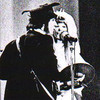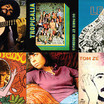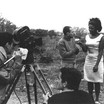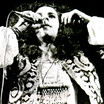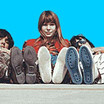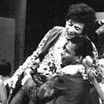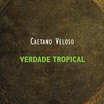Ruídos pulsativos
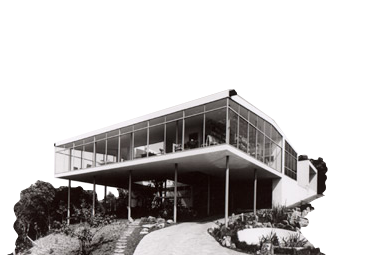
Avant-Garde na Bahia
Of all the names that were part of the renewal of the Universidade Federal da Bahia – UFBA (Federal University of Bahia) during the mandate of rector Edgard Santos, Lina Bo Bardi’s was the most notable. Italian by birth, the architect and designer arrived in Bahia at the end of the 1950s to revolutionize the vision of architecture, of space, of art and of the culture of the whole region.
Despite having her trajectory in Bahia linked to the cultural environment existing around the university, Lina went to Salvador at the invitation of the governor at the time, Juracy Magalhães. The invitation was for the construction and directorship of the Museum of Modern Art of Bahia – MAMB, a post that the architect held from 1959 to 1964. Despite difficulties, the MAMB became a space until then unknown in the cultural life of Salvador. Its activities galvanized the cultural life of the city and bridged the gap between art, the State and the University.
While she was executive director, Lina Bo Bardi implemented partnerships and spaces for reflection in common with Edgard Santos’s term at UFBA. Quoting the architect in her article “Cinco anos entre os brancos” (“Five years among the whites”), she says that she initiated the work at MAMB by “eliminating the ‘established culture’ of the city, seeking the support of the university and the students, making the museum free to the people, aiming to develop teaching activity to the maximum.”
In the museum’s everyday activities, in addition to the exhibitions, there were three fronts of action: the Children’s School, in partnership with the UFBA drama teacher Martim Gonçalves; the Infant-Juvenile School of Music, with the collaboration of maestro Hans Joachim Koellreuter, also from the UFBA; and the activities of the Cinema Club of Walter Silveira, the famous critic and teacher of a whole generation of Bahian film lovers. These activities, together with her classes, public lectures and articles, made Lina Bo Bardi an important figure at that time for a whole generation which, in the words of Caetano Veloso, was “civilized” by her presence in Salvador during those years.
It should be emphasized that this atmosphere of collaboration made MAMB a space in which great names of Bahian culture acted in partnerships, exchanged ideas and intellectual attitudes. It was during this period that Lina Bo shared her life with Glauber Rocha, Calazans Neto, Mario Cravo Junior, Vivaldo da Costa Lima, Jorge Amado, Martim Gonçalves and Rogério Duarte, among others.
Lina Bo Bardi was also responsible for the foundation of the Museum of Popular Art (MAP) and the School of Technical Design at UFBA. The foundation of MAP was of great importance due to its location: the architectural complex of Solar do Unhão, built in the 17th century. The architect obtained financing for its renovation and inaugurated MAP in 1963, with the exhibition “Nordeste” (“Northeast”).
Lina Bo Bardi therefore acted on various work fronts. Whether in modern art, popular art or in industrial design, her intention was precisely to challenge such definitions. What her different areas of work had in common and left as a legacy for Bahian and national culture was the desire for renewal and the breaking of esthetic, and social hierarchies.
Lina also took a decisive part in other cultural areas at the time, by acting as stage set designer for two shows produced by Martim Gonçalves and the students of the UFBA Theater School. The stage design of the “Ópera dos três tostões” (“The threepenny opera”), by Bertold Brecht (1960), and of “Calígula”, by Albert Camus (1961), are two milestones in the history of Brazilian stage design. The partnerships between the Bahian avant-garde continue to influence generations even today.






